Recording birdsong is a great way to become a better birder.
2024 update: Check out my new parabolic microphone setup to record birds.
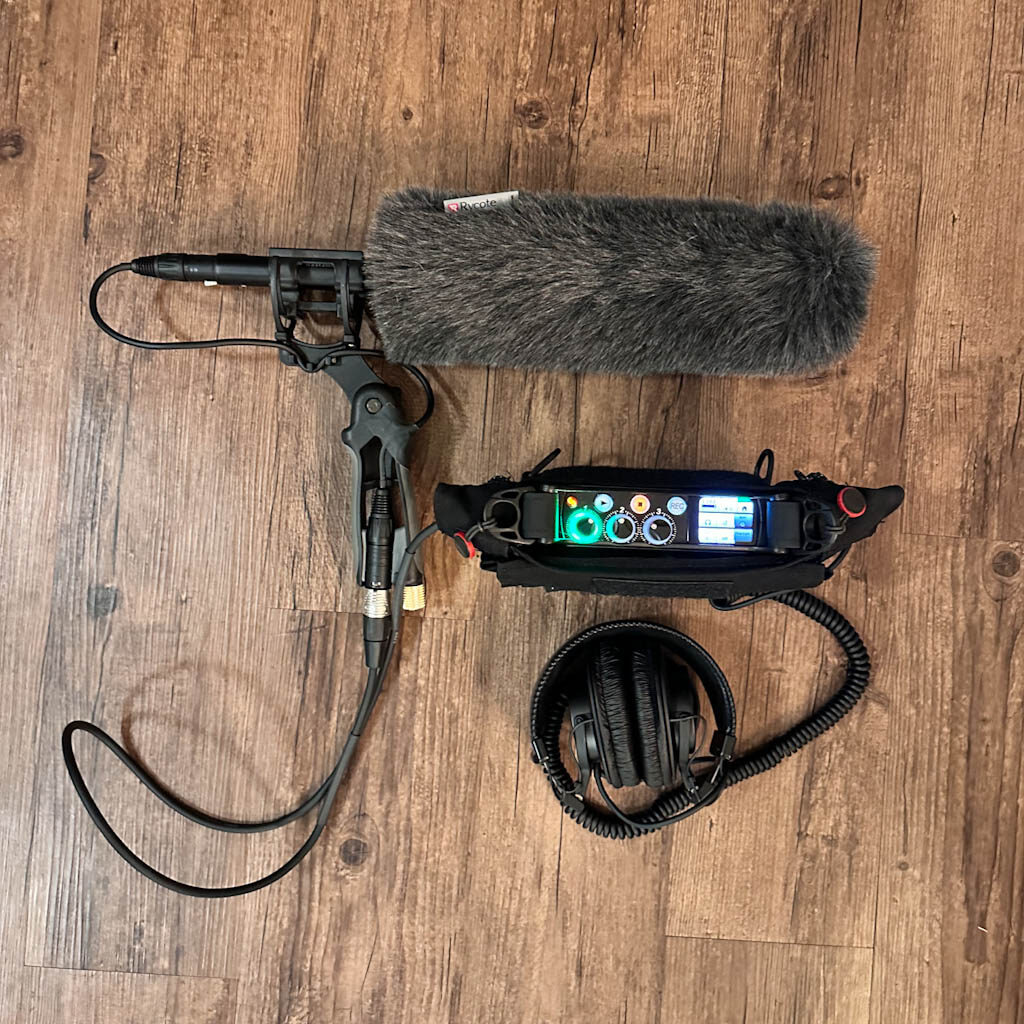
When I started birding, taking photos of birds was a natural extension of looking at them through binoculars. For years I was focused on capturing beautiful photographs of any bird I could, letting their songs and calls punctuate the hum of nature in the background. I remember going birding with my friend Dinuk for the first time. He could seemingly name all the bird species we heard just by ear, noticing species that would’ve gone unnoticed and unseen by myself.
Over time, I would slowly pick up knowledge of new bird songs just from repetitive listening and close observation. But it wasn’t until I decided to start recording bird songs with my iPhone that I started to learn faster. Eventually, I got tired of the limitations the iPhone microphone imposed and decided to start looking for a recording setup that would enable me to get better capture birdsong. Read about my first experience recording with this setup.
If you’re considering buying a microphone and recorder setup to record bird songs, it can be a bit overwhelming with the variety of equipment available online. I’ve found a setup that works nicely for my needs and will share with you what I use out in the field.
1/19/23: I’ve made a few upgrades to my setup since the publishing of this post, so I’ll update you on my current equipment along with my previous gear.
Microphone
Sennheiser ME67 Shotgun Microphone
I picked up this discontinued microphone at the recommendation of the Macaulay Library and Cornell Lab of Ornithology. It’s very similar to my previous microphone the ME66, but twice as long with better directionality. It’s easiest to get on eBay these days.
Sennheiser ME66 Shotgun Microphone
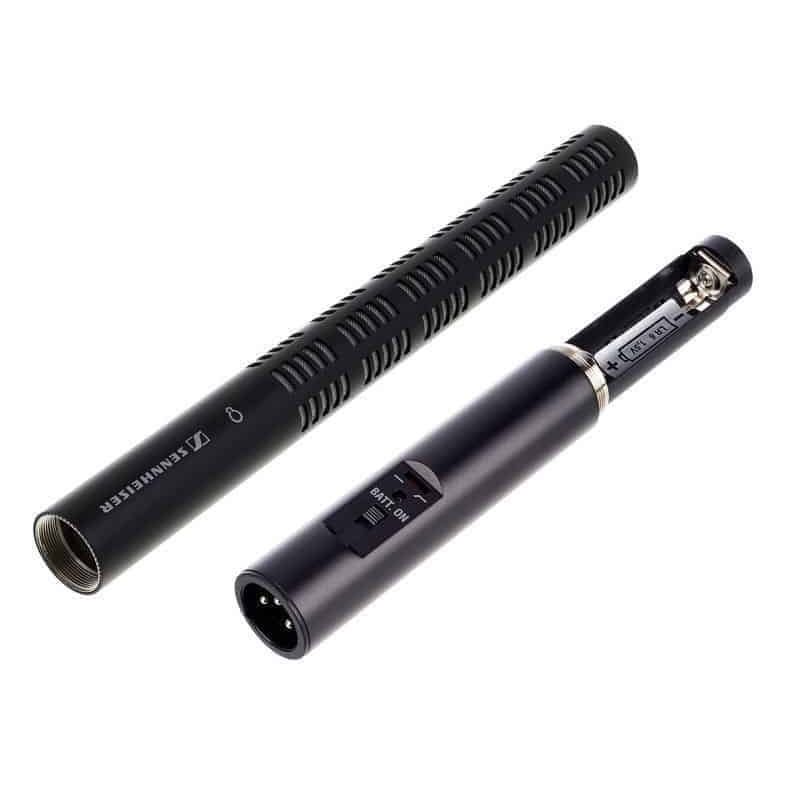
There are several styles of microphone you can use when recording birds: a handheld recorder/microphone combo like the Zoom H4N, a parabolic setup (a microphone with a parabolic dish), or a shotgun microphone. I chose a shotgun microphone for its highly directional recording (but not too directional!). Of course, you can also use your phone. If you use your phone, I recommend recording with the Merlin app, which will record in .WAV format and ID birds at the same time.
A shotgun microphone is great for recording birds from a distance as it’s most sensitive in the direction you point it, and it does a decent job of filtering out sounds coming from other directions.
2022 update: The ME66 has been discontinued, but the MKE 600 is now available
Shock Mount
Rycote Lyre Mount with Pistol Grip Handle

If you hold a microphone with your bare hands it will cause handling noise and potentially ruin your recording. I recommend putting your microphone into a shock mount/handheld grip that will reduce or eliminate handling noise.
I picked up this pistol grip handle for my microphone because it’s easy to hold and can be adjusted to multiple angles depending on how you want to record.
So you don’t have to carry your microphone for two hours by hand, you should consider attaching a shoulder strap to the grip handle. I found this adapter from my local camera store. It fits into the bottom of the grip and has a hole for a ring attachment. From there, I attached a camera strap to it and sling it over my shoulder.
Windscreen
Rycote Softie
This is simply a great windshield that fits the ME67 mentioned above.

Auray WSS-2018 Professional Windshield

When you’re out in the field, winds and breezes are inevitable. Having a quality windscreen on your microphone will help cut out some of the noise that wind will cause. The hairier the better. Your microphone may come with a foam windscreen, but that won’t cut it when you’re outside. This windscreen slips over the end of the microphone and does a great job cutting out wind pollution.
Recorder
MixPre-3 II
I recently upgraded from the Zoom H4N to the MixPre-3 II which creates recordings that are super clean and with virtually no noise from the recorder itself. The quality of your field recordings will greatly depend on factors such as your microphone, and ambient noise like wind, other birds, planes, etc. The biggest feature of the recorder is it has the ability to record in 32-bit float. What does that mean? It means that your recordings will never clip (be too loud) and even quiet recordings can be edited to acceptable levels. It also has a pre-roll feature that captures up to ten seconds before you press record which can help with catching a bird call. This recorder is not cheap but it seems like a buy-it-for-life type of device
You can get it on Amazon, but I recommend getting it from B&H Photo Video. They sell a kit that comes with literally everything you need, including an excellent carrying case you’ll need in the field.
Zoom H4N Pro
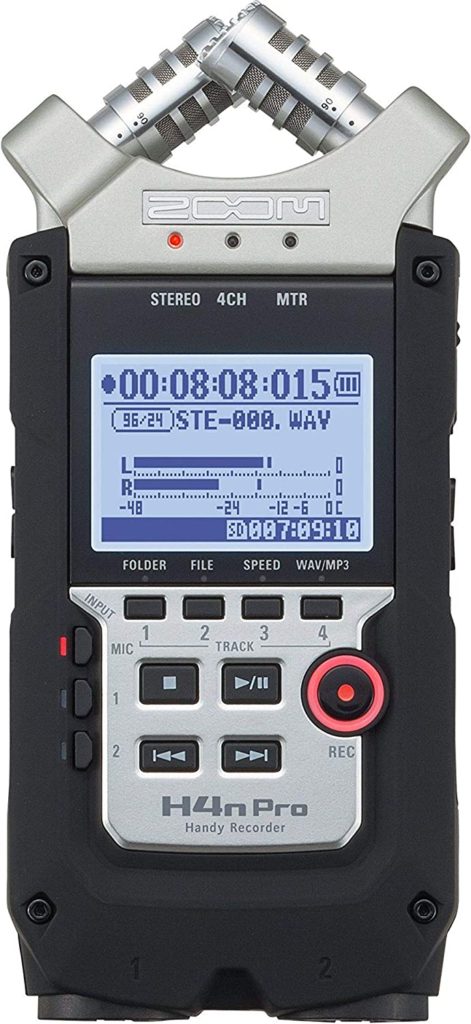
A microphone alone won’t record your bird songs, you’ll need a recorder plugged into your mic to actually save the clips. This is where the Zoom H4N Pro comes in. With built-in microphones, this recorder can capture both with and without an external mic attached. A built-in speaker enables you to listen to your clips on the go. It eats through AA batteries like candy, however.
XLR Cable
Rycote Mic Tail Short XLR Cable
Another must is a cable to connect your microphone to your recorder. In my case, I use two XLR cables. The Rycote mount above requires a specific XLR cable that will fit in the grip. From there, I attach a longer XLR cable to the recorder itself. This setup keeps my cables from getting in the way when I’m trying to get that perfect recording.
Headphones

An optional piece of equipment in my bird song recording setup is a pair of over-the-ear headphones. Having a pair of headphones connected to your recorder enables you to hear what the mic is hearing and block out ambient sound. I say this is optional because I find myself often leaving the headphones at home when I go out to record. My reason for this is it can be cumbersome to constantly be putting on and taking off the headphones in between recordings. You’ll need your unobstructed hearing when not recording so you can spot new birds so leaving the headphones on all the time isn’t an option. They can be difficult to put on when your hands are full of your microphone and recorder.
I hope this breakdown of what gear I use in the field to record birdsong is helpful. But of course, none of this is necessary when you are starting out. I recommend starting out with your phone for a while until you decide if bird song recording is your next big hobby. You’d be surprised what a phone can record these days. Pro tip: Make sure to download an app that can record in WAV format (I recommend Merlin) to avoid your files getting compressed into MP3.
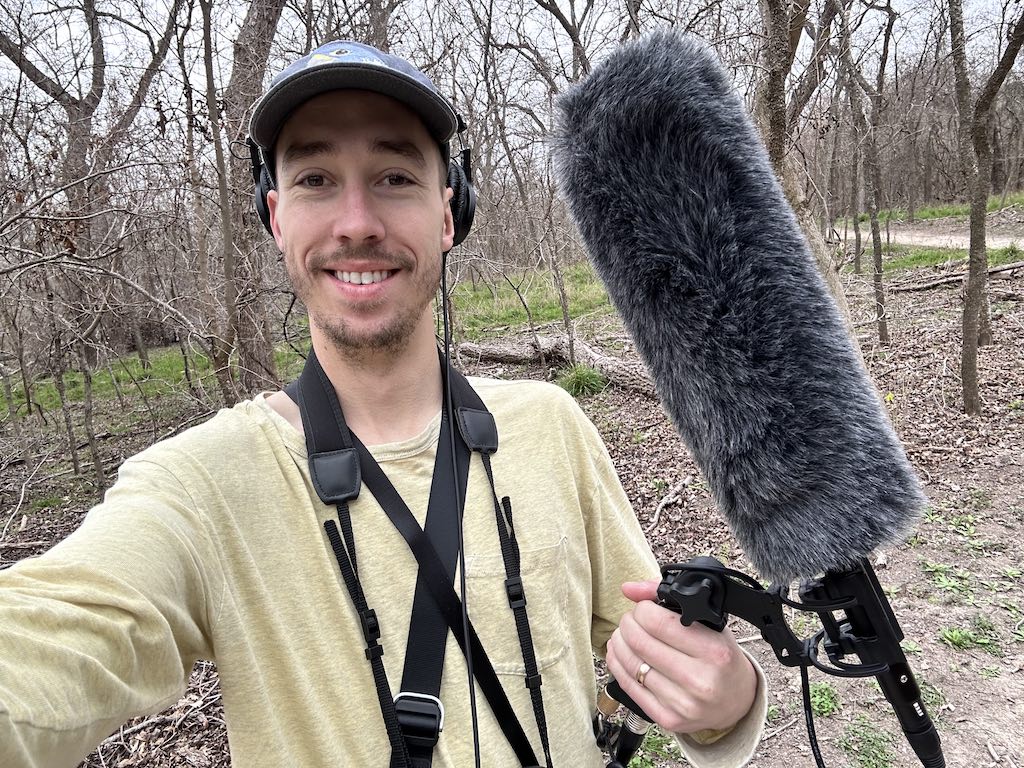
Bonus reading: Quick guide: How to edit bird song recordings, My gear setup for bird photography
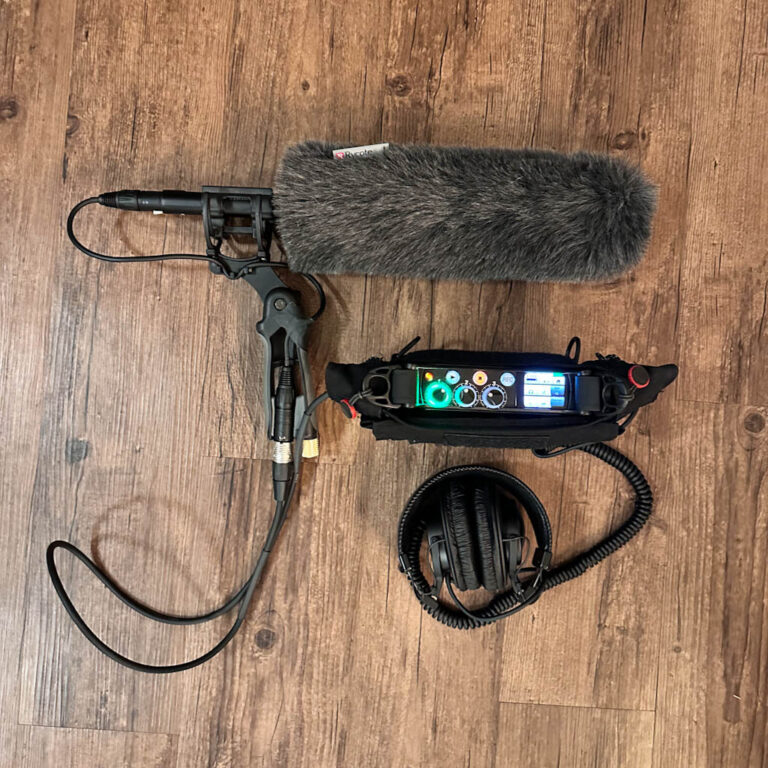

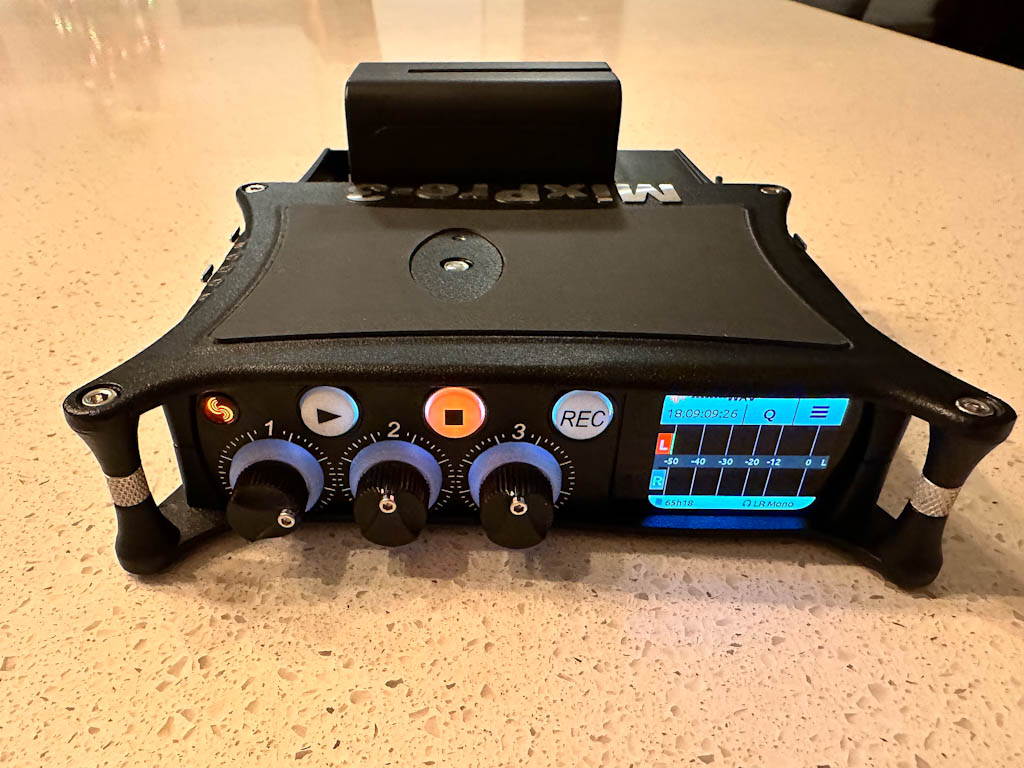
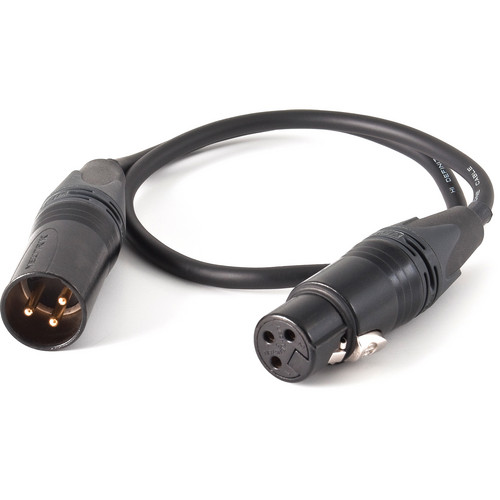
Thanks! Very helpful.
Hi Jeffrey,
I’ve been working on a new case option for the MixPre3 for the past few days. Your story about collecting birdsong came up on my Google feed and a few things caught my eye. Can you drop me an email to discuss? Thanks, John Fairley, pres, Strut Cases
Thank you! Would you recommend changing anything in this setup for recording nature sounds generally e.g. insects at night, flowing streams etc?
Thanks again
Pete
Hi Pete, thanks for reading!
An interesting device I’ve come across recently is the AudioMoth. It’s more of a passive device, but it can record ultrasonic and has a passionate community around it.
But in general, consider looking for omnidirectional mics if you want to record ambient soundscapes at night.
Jeff
Well Jeff, This older lady is still totally confused not having the slightest idea of what any of these objects are, though your descriptions are excellent, I can’t tell what I absolutely need and what would be just an improvement. I need a list of things I need for my iPhone 14 and recording on Merlin. I need a shotgun mic. Got that. But how do I attach it to my phone? I hate buying things and then not know how to put them together. Thanks
Hi Fran!
Which shotgun microphone did you purchase? Shotgun mics require power, so if your mic is battery-powered, ensure it has a battery and is turned on.
Long story short, if your mic uses a 3.5mm headphone cable you will connect this cable to an Apple 3.5mm to Lightning adapter.
I’ll use this Rode shotgun mic as an example for you. This microphone comes with a tiny cable with 3.5mm headphone connection on both ends. Connect this cable to the microphone and plug the other end into one of those headphone adapters from Apple. Then turn on the mic and open Merlin to verify the mic is working.
(Tip: if there’s still no signal, flip the tiny headphone cable around that comes with the mic)
-Jeff
Can I get a microphone to Directly plug into the iPhone? iPhone 13 with lightning. I would like Merlin to at least be able to hear the birds that I hear.
I’m looking at getting a field recorder to record birds. I’m wanting them as ambient backgrounds so I don’t need to record specific birds. My budget is under 500. Would you recommend the H4n or F3? I want clean audio so the less noise I hear from the recorder the better. Are they okay standalone, or would you recommend a mic with them?
Hi Sarah! The F3 would be a much better choice and if you’re looking to use it with omnidirectional mics for ambient recording. With the F3 you won’t have to adjust gain levels. I don’t have these yet, but I hear nothing but great things about using Pluggy XLR mics with the Zoom F3. It will keep your setup super compact.
Hi Jeff, thanks for providing your gear set up. I was able to replicate for my own set up. I did have a question-Does the thumb drive used in the USB-A port of the MixPre-3 II need to be formatted while in the device before use? I used a thumb drive during my first recording trial and my recordings were written to the formatted SD card, but those files were not copied onto the USB drive. Any suggestions?
Thanks again,
Edd
My guess is it may need formatting depending on if it’s been used before. I believe the MixPre can save the recordings to both the internal SD and external USB drive.
Lovely read and very nice tips of what gear to get! I do have a question – what is a good microphone for a night singing birds who stay still in same place for hours or might jump left and right? I bought a Rode videomic Rycote but my audio is muffled and worse quality somehow than what my Tascam gets without external mic. I usually leave it there while i find bird 2nd and 3rd with other 2 recorders. I was told that as soon as bird is not front of the shotgun mic precisely, the audio gets muffled asap.
When I had Tascam dr-05x on the ground for hours, the bird was high quality and it didnt change into worse quality when bird moved around in same location. The Tascam was recording in steady ground 1h 20min and all the time bird sounded amazing. Whenever he was located left from tascam, right, further away or closer.
I just am looking for a mic what sounds like my tascam is hearing, but able to move it closer to the bird and more mobility when I cant get closer with tascam only. So i can use the mix like a goose neck to sneak it closer to bird or aginst a branch and so on.
Thank you!
Hey Flacko, great questions!
To answer your first question, your bird sounds muffled precisely because your new shotgun microphone is picking up sound from a small area of the tree and won’t sound good when the bird moves away from that spot. Shotgun mics work if you are aiming manually or if your target is fixed, like a nest.
For your situation, you should look for an omnidirectional mic and try to get it further into the tree. If you’re trying to set up semi permanent recording for this spot, you could affix a small lavalier or other onnidirectional mic and run the cable to the recording device. It may need a pre-amplified to boost the signal if it has to travel far.
-Jeff
What are the best settings for the Zoom H4n Pro Handy recorder, using the built in mikes? Thanks.